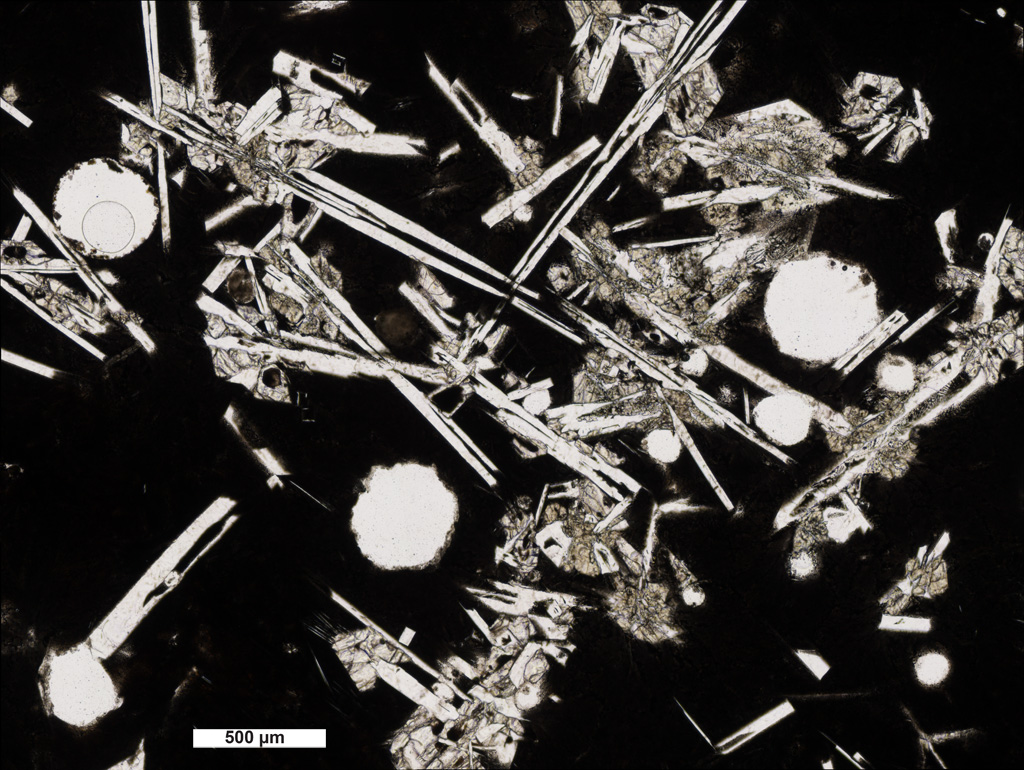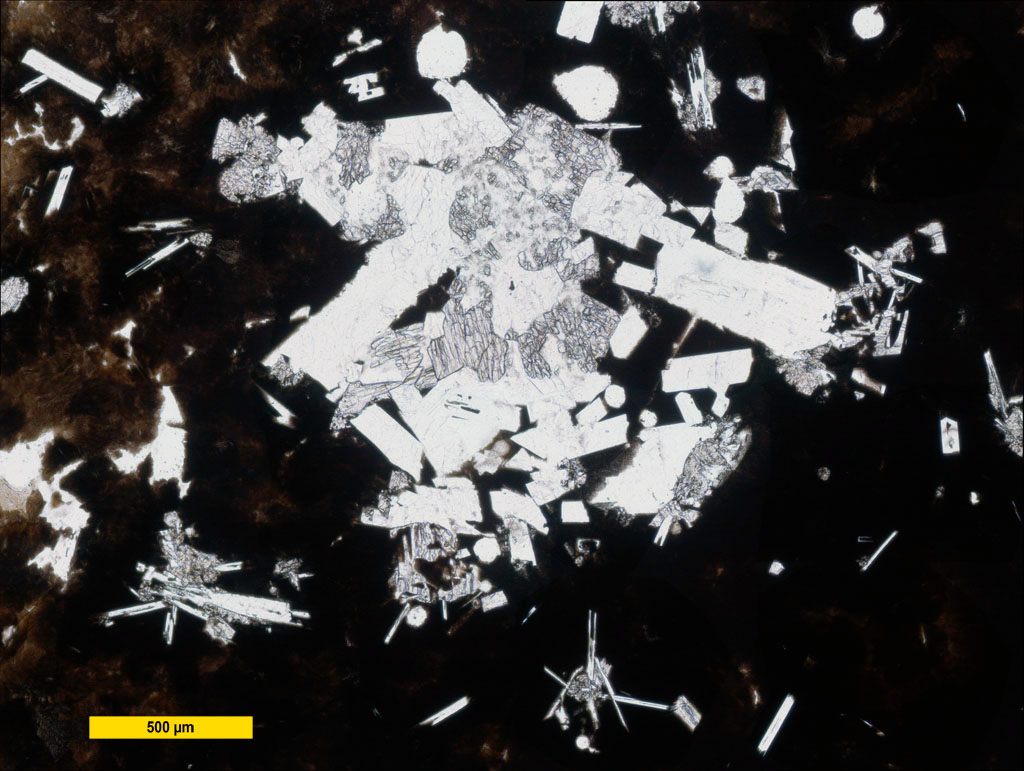1.4 MORB Petrography: Modal Mineralogy
The three principal phases typically found in MORB are plagioclase (Pl), olivine (Ol), and augitic clinopyroxene (Cpx). Commonly, olivine and plagioclase occur as phenocryst phases (see Figure 1.06 and Figure 1.09). Clinopyroxene appears as a phenocryst in MORB that has evolved significantly from its primitive composition (see Figure 1.07). More often, clinopyroxene occurs as a groundmass phase in association with plagioclase ± olivine ± oxides. In highly evolved MORB, orthopyroxene (Opx) or pigeonite (Pgt, sub-calcic clinopyroxene) can replace olivine as a significant mineral phase. Plagioclase compositions typically range from labradorite (An50) to anorthite, except in the most chemically evolved lavas. Fe-Ti bearing oxides (titano-magnetite, for example) are common, but they generally crystallize late in the cooling of a lava (they are typically groundmass phases). However, in MORB magmas that have been highly enriched in FeO as a result of tholeiitic magma evolution, oxide crystallization can be stabilized earlier in the crystallization sequence and may form phenocrsts (e.g. Perfit and Fornari, 1983).

Figure 1.06. MORB Thin Section. Plagioclase + olivine phenocryst clusters in a MORB sample. Click on the image to see a larger interactive version.

Figure 1.07. MORB Thin Section. Plagioclase + clinopyroxene phenocryst clusters in a MORB sample. Click on the image to see a larger interactive version.